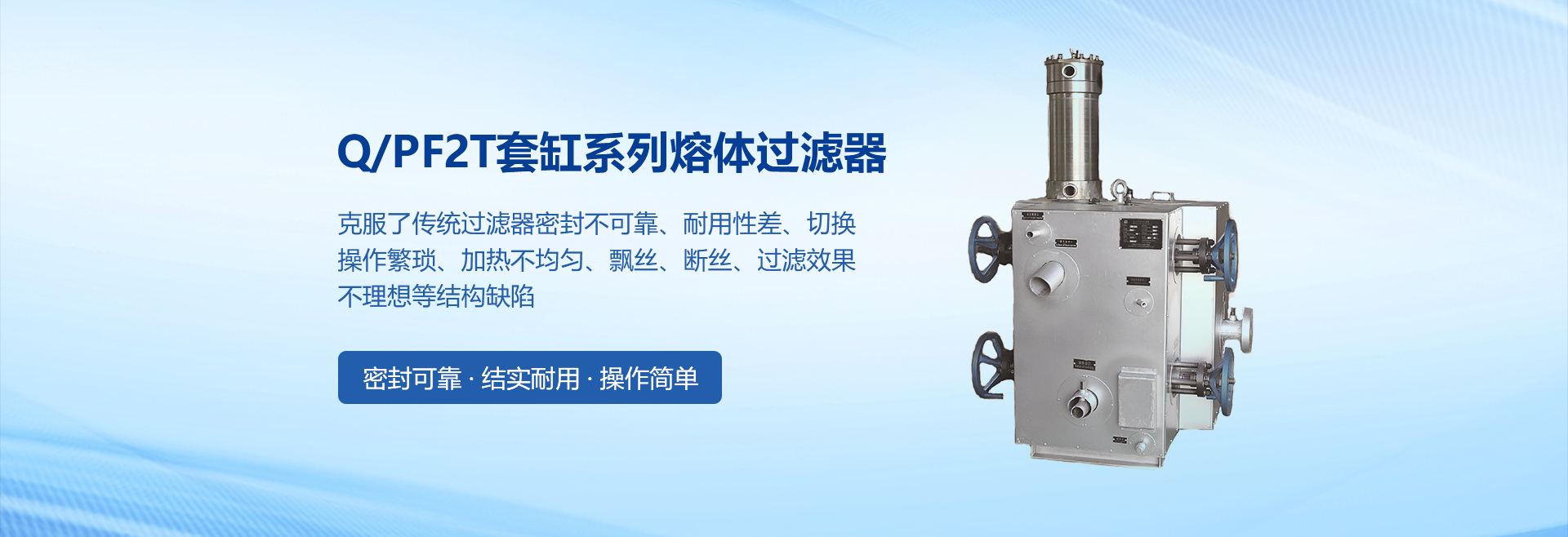Melt filter is a key equipment used to remove melt impurities in plastics, rubber, chemical industry, etc. Its maintenance directly affects production efficiency and product quality. The following are the core matters that need to be paid attention to when maintaining, combined with industry norms and practical experience:
First, filter protection: fine maintenance of core components
Prevent deformation and damage
The filter screen (such as stainless steel wire mesh) is a wearing part, and the use of hard tools should be avoided when cleaning to prevent mesh deformation or rupture. Deforming the filter will lead to reduced filtration accuracy and may damage downstream equipment (such as spinning pumps and spinnerets).
Case: A factory due to the damage of the filter screen was not replaced in time, resulting in impurities entering the spinning component, resulting in a 30% increase in the fiber breakage rate.
Replacement cycle reference
Conventional environment: It is recommended to replace the PP meltblow filter every 3-6 months, which needs to be combined with the impurity content of the medium (if the proportion of recovered material is high, the cycle needs to be shortened).
Harsh conditions: If the melt contains a large number of unmelted particles (such as filler), it is necessary to check the filter pressure difference every month, and replace it immediately when the pressure difference exceeds 2 times the initial value.
Second, regular cleaning: to avoid blockage and performance attenuation
Wash trigger condition
Pressure difference monitoring: When the filter inlet and outlet pressure difference exceeds the set threshold (such as 1.5 times the initial pressure difference), it needs to be cleaned.
Regular cleaning: Even if the pressure difference is not exceeded, it is recommended to carry out preventive cleaning every 2 weeks to prevent impurities from hardening.
Cleaning specification
Chemical cleaning: Use a cleaning agent compatible with the melt (such as high temperature flux) to avoid corrosion of the filter material.
Physical cleaning: for detachable filter, clean with high pressure steam or ultrasonic, pay attention to control the cleaning temperature (usually ≤300℃).
Third, sealing and temperature control: prevent leakage and performance fluctuations
Tightness check
Leakage detection: In the running state, check the flange connection with an infrared thermal imager, and the temperature difference of more than 5 ° C may indicate leakage.
Fastening specifications: Tighten bolts in hot state multiple times to prevent the slide board/plunger from getting stuck. Torque reference: M24 bolt cold 40N·m, hot 30N·m.
Temperature management
Temperature procedure: First low temperature (65℃) for 1 hour, and then at 40-50℃/h to rise to the working temperature (such as spunbond system 230-250℃).
Cooling protection: It is necessary to gradually cool down during shutdown to prevent the solidification of melt from blocking the filter or damaging the equipment.
4, pressure and lubrication: to ensure the stability of operation
Pressure monitoring
Working pressure: The recommended setting value is less than or equal to 8MPa. During network change, the actual pressure should be less than 3-5 mpa to avoid device overload.
Abnormal treatment: If the pressure surges, immediately switch the standby filter and check whether there is blockage or leakage.
Lubrication maintenance
Frequency of lubrication: The slide/plunger is coated monthly with high temperature grease (such as graphite-based grease) to reduce friction.
Maintenance of the hydraulic system: Replace the hydraulic oil regularly (refer to the equipment manual for the cycle, usually every 6 months) to avoid oil pollution resulting in network adapter change.
5. Safe operation: Prevent potential risks
High temperature protection
Wear heat insulation gloves to avoid direct contact with high-temperature melt (the temperature can reach more than 280 ° C).
Electrical safety
Check whether the insulation layer of the heating element is damaged to prevent short circuit. Dust the electric control cabinet regularly to ensure good heat dissipation.
6. Record and training: Establish long-term management mechanism
Maintenance record
Record the date of each maintenance, replacement parts, differential pressure data, etc., to facilitate the analysis of fault trends.








